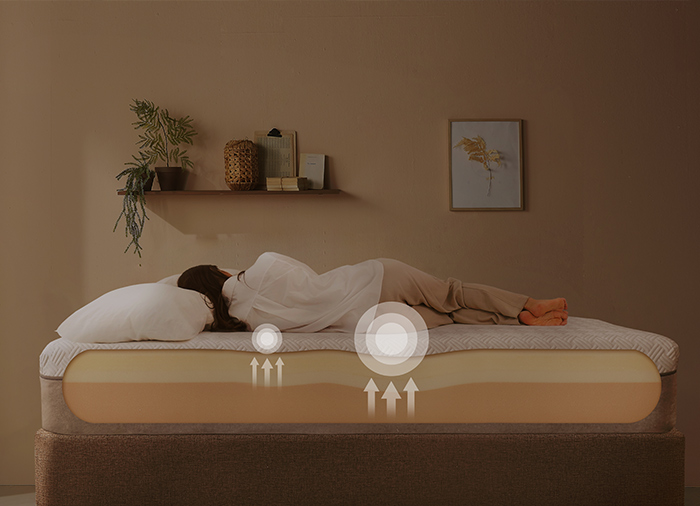While we already know that memory foam mattresses are good for getting a good night's sleep, many people may not know exactly what memory foam is and why it is beneficial.
Let's learn more about memory foam.
1. Origin of Memory Foam

Memory foam was developed in 1966 by NASA for the safety of astronauts in the shaking spacecraft. It was designed to provide smooth shock absorption, gravity/weight distribution, and body contouring.
Unlike Spring/LaTeX, it has the ability to transform and restore its shape by wrapping around the body, and its characteristic feature is "viscoelasticity," which combines the elasticity of regular foam with viscosity.
2. Polyurethane? Memory foam?
When considering many mattress products, you may come across the phrase "polyurethane used as the filling material." This can cause confusion for many people as to what polyurethane is and how it differs from memory foam.

Polyurethane is a compound that consists of a combination of polyol and isocyanate, and it is used as a raw material for materials such as spandex, car seat cushions, and insulating materials. When a foaming agent is mixed in and expanded, it becomes polyurethane foam (sponge). If it is produced by adding viscosity during the foaming process, it becomes memory foam.
In other words, memory foam can be seen as a type of polyurethane foam, which may make it easier to understand.
3. Advantages of memory foam

As previously mentioned, memory foam has the major characteristics of "viscoelasticity" and "shape transformation and restoration." It was developed to prevent injuries caused by collisions in shaking spacecrafts, so it has the advantage of not leaving gaps when fitting to the body's curves.

During sleep, gaps created by the body's curves, especially when lying in a supine position where the spine's S-curve is not sufficiently supported, can cause pressure points, leading to pain and disturbances in deep sleep. Memory foam can help with even pressure distribution, as it conforms to the body's shape by sinking in at protruding areas like the hips and shoulder blades, and filling in the gaps in the waist area, providing support to the whole body.
Moreover, memory foam has the advantage of having excellent resilience even after long-term use, unlike spring/latex products, which may lose their resilience over time and produce dust. (Of course, only high-density products will maintain their resilience over extended periods of use.)
4. Disadvantages of Memory Foam

1) Odor
The raw materials for polyurethane foam are divided into TDI and MDI, and volatile organic compounds (VOCs) can be detected as a result.
This VOC is the cause of the unpleasant odor that is unique to foam mattresses.
2) Heat
Foam mattresses have the property of trapping and containing heat.
Moreover, because they wrap around the body without any gaps, they can easily become hot.
As a result, even when using summer bedding, foam products can feel hotter than spring products.
3) Stifling Feeling
Sometimes when people switch from using a spring mattress or a firm mattress to a memory foam mattress, they may have trouble adapting to the soft and cozy feeling of the memory foam.
Moreover, since memory foam is temperature-sensitive, it can feel mushy when it's warm and firmer when it's cold. This can be frustrating for people who are not accustomed to it, as they may find it uncomfortable and difficult to adjust to the changing sensations.
Especially during the summer months, this sensitivity to temperature can cause discomfort and lead to a sense of frustration for those using a memory foam mattress.
Memory foam, a guy like you
Learn about the origins, materials, and pros and cons of memory foam. How is it? I hope you've gotten a little closer to memory foam.
Overseas countries, such as Europe and the United States, where people used to live in bed from an early age, are now continuously changing from mattresses using springs and latex to memory foam mattresses.
Memory foam is made of polyurethane material, which can be found in daily life such as bandages, swimsuits, and sofa furniture, so it is more comfortable and safe than other materials, and it is also harmless to the human body.
Of course, all mattresses feel different depending on individual preferences, so it is best to take enough time to adapt or sleep on your own for at least 21 days before making a decision.
Then have a good night today






